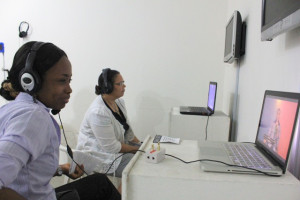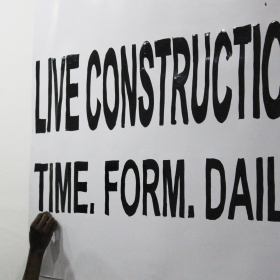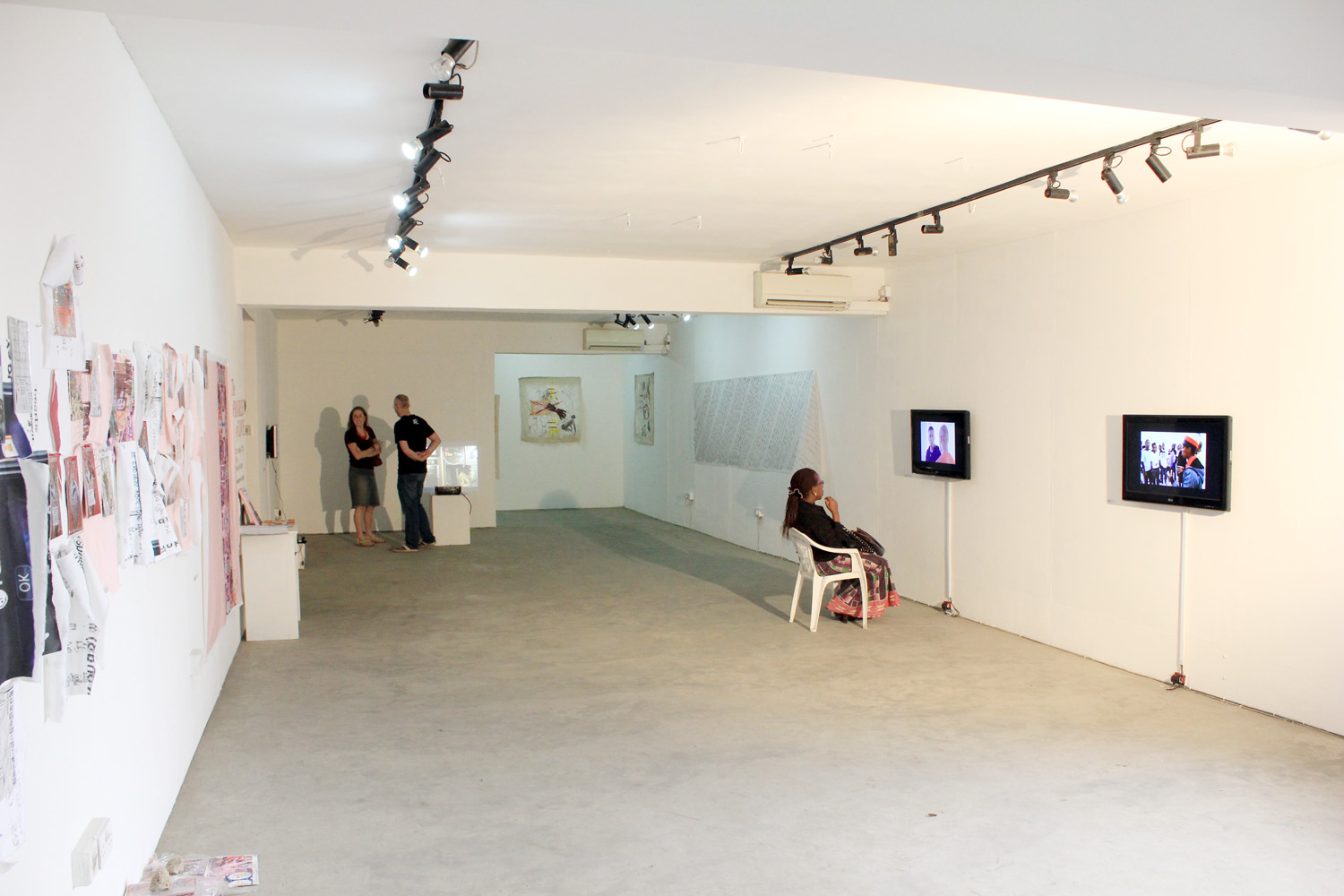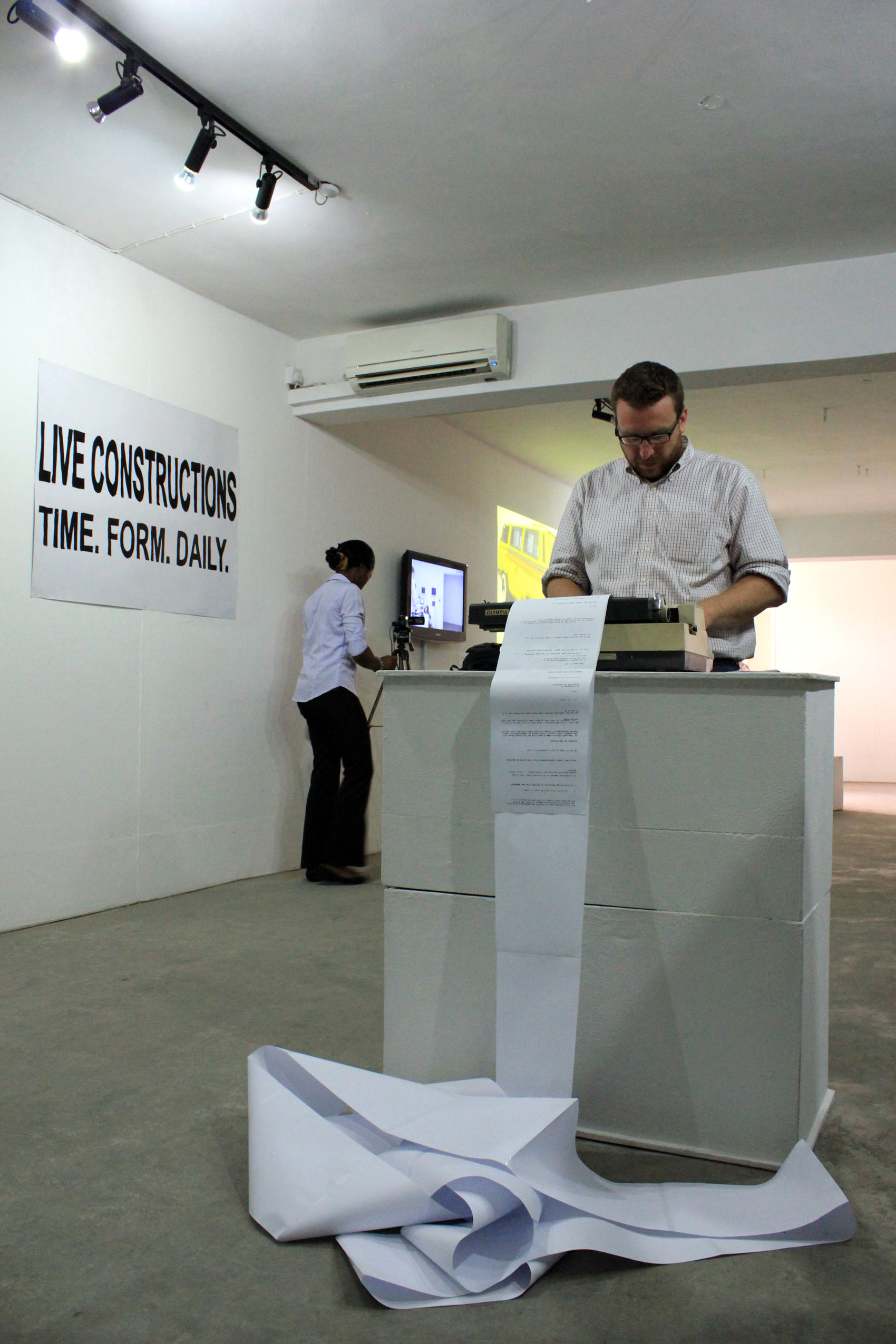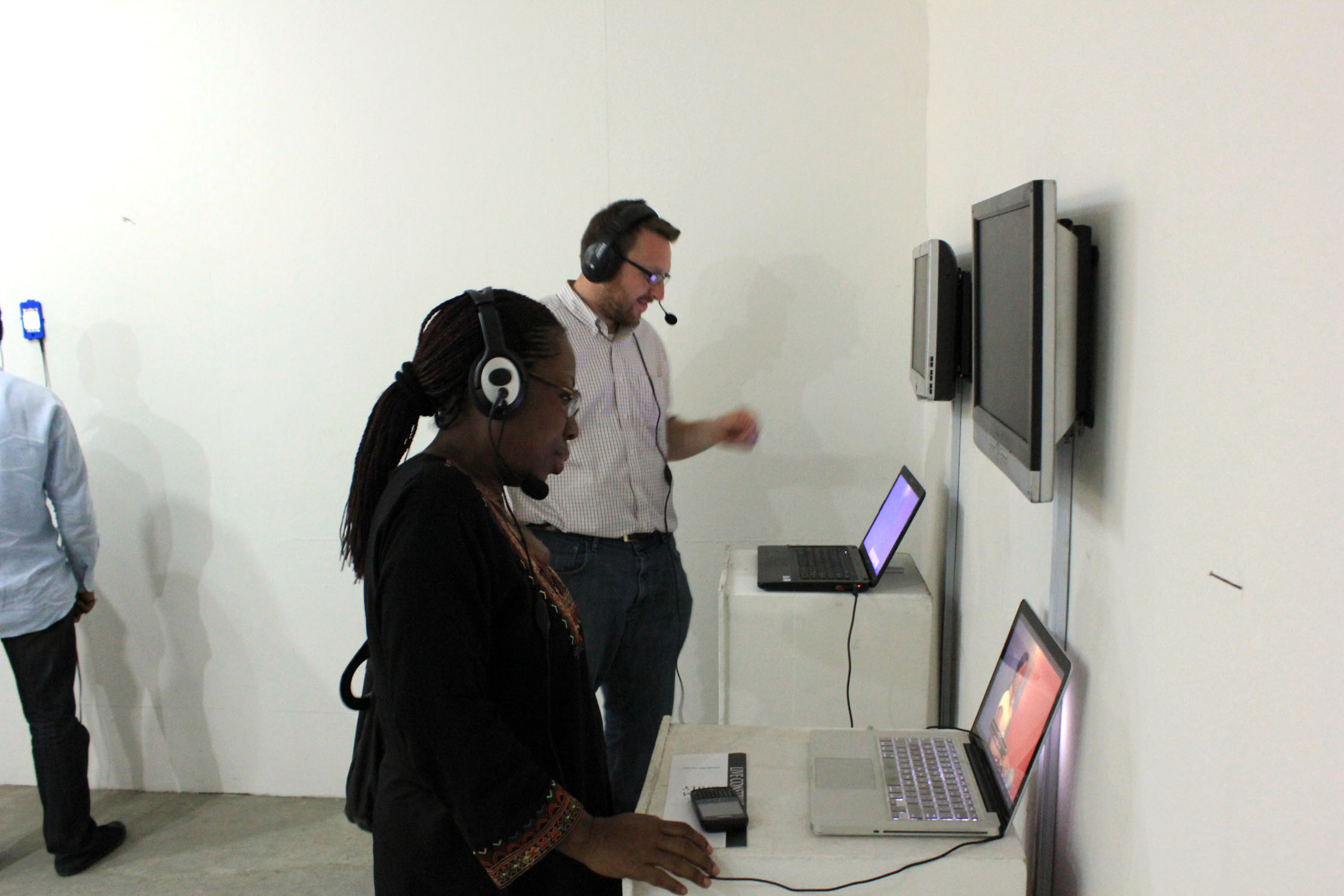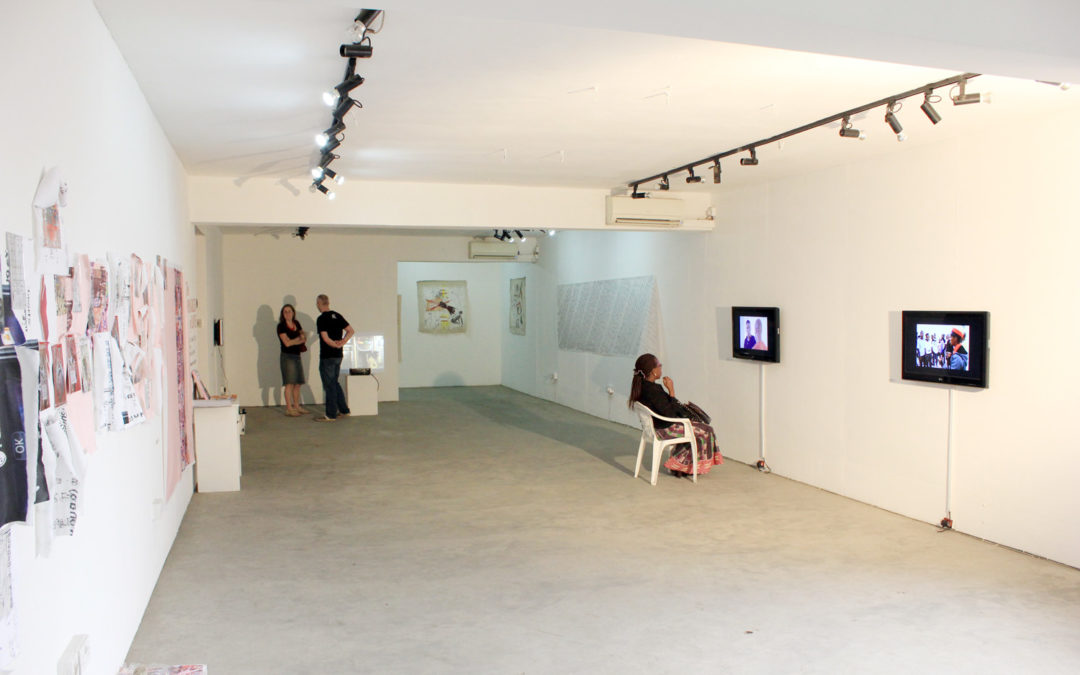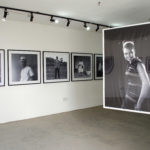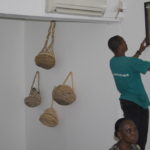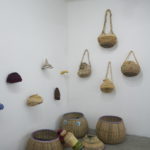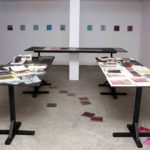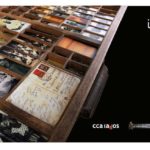Exhibition by: Mthabisi Phili, Zimbabwe, Jacquiline Karuti, Kenya, Kelani Abass, Nigeria, Chidinma Nnorom, Nigeria, Ato Annan, Ghana, Richard Ovbiebo, Nigeria, Thabiso Sekgala, South Africa, Tina Adebowale, Nigeria, Portia Zvavahera, Zimbabwe
Live Constructions.Time.Form.Daily is an intervention into the CCA History/Matter programme. Materiality surrounds us in all forms and functions. We imagine these material objects to be functional and, at times, an extension of our history and our identities. The Curator and the artists collaborated. It was agreed, the artists would not install individual works in the gallery of CCA but rather to conceptualise and construct a series of presentations on the topic of History and Materiality. Participating artists use their bodies, their intellect and the experience of the past four weeks in bringing to the foreground presentations on their representations of the subject
Live Constructions. Time. Form. Daily.
“Every human being is an artist, a freedom being, called to participate in transforming and reshaping the conditions, thinking and structures that shape and inform our lives” Joseph Beuys on Social Sculpture.
Live Constructions; Time. Form. Daily. is an intervention into the CCA History/Matter programme. Materiality surrounds us in all forms and functions. We imagine these material objects to be functional and, at times, an extension of our history and our identities. The Curator and the artists collaborated. It was agreed, the artists would not install individual works in the gallery of CCA but rather to conceptualise and construct a series of presentations on the topic of History and Materiality. Participating artists use their bodies, their intellect and the experience of the past four weeks in bringing to the foreground presentations on their representations of the subject.
History is often perceived as a distanced past event and, when history is presented, it is often spoken of as the logical construction of facts and events. This presentation is a conceptual construction comprised of various live actions. In this body of work, artists create a discursive narrative on a history that is close in time. The function of the discursive framework is to engage, reenact and reoccupy the knowledge gained from this residency.
Over the past four weeks, 10 artists from across the continent were collectively part of a series of engagements with artists and curators from across the world. The daily forming of critical thinking on the subject of history and materiality was a key element to the educational residency. These live talks and presentations from key practitioners such as Simon Njami, Kianga Ford, Tam Fiofori, Candice Breitz, Emeka Ogboh, El Anatsui, Tessa Jackson, Kofi Setordji, Jelili Atiku, Simone Leigh, Amilcar Parker and J.D. ‘Okhai Odjekeire provided a broad scope of narratives on photography, performance, research methodologies and professional development. Each of these aspects augmented, shaped and influenced the artists as participants.
In Live Constructions; Time. Form. Daily. the artists question the notion of the dominant voice and the authorship of who is marking time and moments. In questioning the popular forms of historicization, the artists have come together to develop a series of social sculptural responses to the residency. They confront and challenge issues related to social and political contexts. This series of interventions that unfold in the live presentations begin to question the constructions of our geopolitical and the social existence within the collective space.
Over the past weeks each instructing artist and curator has a unique educational approach to the subject of history and materiality. Amilcar Parker, a performance artist from Brazil, engaged with text and performance as artists spent an observational moment on the streets; they took notes and collectively read their text. Simone Leigh, a sculptor from New York, took the group to the Owode Metal Market, Balogun Fabric Market and to the Aroloyo Street where photographic equipment is sold. These material objects were used to create work. Bisi Silva,
Curator and Director of CCA led the group to the Osun-Osogbo Sacred Groves. Here they learned about Yoruba cosmology and the annual celebration of the Osun the Goddess of fertility.
History/Matter also provided for the non-manifestation of materiality. This in addition the programme provided for the non-physical forms of materiality, in the form of lectures and presentations. Video, audio and stills were taken of the presentations. As the next programme will be held in Ghana in 2013, the documentation of the past two programmes will be important material for future use. But we are concerned with the present use of this archive, both with its literal documents and also its ephemeral experiences and memories.
The Intervention:
This is a series of integrated artist interventions on responding to the past four weeks of presentations and engagements. The public attending the programme is included in the event and, by attending the opening, the audience is implicated and called upon to participate and respond to issues with which we as artists and curators have been grappling.
These interventions are curated as follows:
The Dissemination of Information:
Live Talk and Performance (30 minutes)
In this work, Mthabisi Phili and Jacqui Karuti are the news anchors for the program. This reenactment of a newsroom, reports on the History/Matter international programme.
The Record is Fact?
Ongoing performance with the audience
The typewriter was invented in 1808 by Pellogrino Turri. It has almost become obsolete since the introduction of more advanced forms of recording text.
The Record is Fact? Is a question posed by the artists at the residency. This question is a call from the artists to probe a far deeper meaning and interpretation of the notion of text as fact. Text creates authority and authority should always be transparent and open to questioning.
Using an “old” typewriter, the artists tape together a series of blank sheets. The paper becomes a canvas, and the audience and the artists are invited to type their views on history and materiality.
The ribbon of the typewriter will be removed after the final text. The final chapter and view will have been written by the end of the reception.
Articulation:
Video Interviews (10 minutes)
The Artist Collective, CCA 2012
Lagos was consumed, appropriated and so integral in the month long programme. Articulation is a collective collaboration. Here the artists place a camera and a chair inside the CCA library. Each artist responds to two questions: these two questions are extrapolated from the Simon Njami seminar and the daily search for food around the CCA space.
Where is there? On the Global and Local.
How do you immerse yourself in food without pepper?
The Witness has Spoken:
Audio (3 minutes)
Amilcar Parker a performance artist facilitated a group walkabout the streets of Sabo. In this walkabout, the group has to take individual observational notes of what they saw and observed. The group gathered back in the space and collectively read their notes. At times in historical moments, we have conflicting records of historical events. This muddled and collective tone, presents this tension that witnesses can have multiple accounts of the same scenes.
Curator:
Jabu Pereira, South Africa
Curatorial Supervision:
Kianga Ford, USA and Bisi Silva, Nigeria
Project Co-ordinators, CCA Lagos
- Taiye Idahor
- Kemi Aderinto
- Silas Matope (National Gallery of Zimbabwe, Harare)
- Adwoa Amoah (Foundation for Contemporary Art, Accra)
